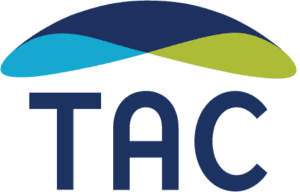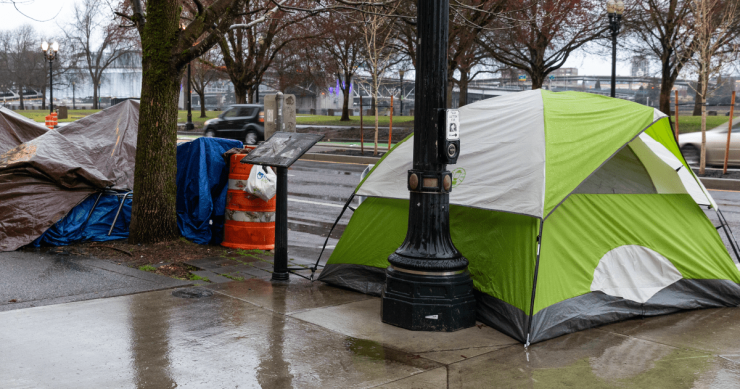As communities across the United States grapple with visible unsheltered homelessness, mass incarceration, and institutionalization — all of which disproportionately affect people with disabilities — policymakers must use available data and evidence-based practices to advance solutions.
The Consequences of Housing Insecurity
Since 2007, TAC and the Consortium for Constituents with Disabilities have jointly produced Priced Out, a regularly updated report on the housing affordability crisis for people with disabilities who rely on Supplemental Security Income (SSI). With the latest data from several federal sources compiled at the end of 2023, it is unfortunately clear that yet again, the 4.1 million people with disabilities ages 18 to 64 who receive SSI cannot afford an apartment in any housing market in the United States without additional support. Because there is neither enough affordable housing nor sufficient access to rental assistance, many of these people find themselves homeless, at ongoing risk of homelessness, living in segregated institutions, or incarcerated.
Disability and Homelessness
- 84% of disabled people with low incomes in the United States — nearly 18 million people in 15.6 million households — are eligible for housing assistance but do not receive it.
- 31% of all homeless individuals experience chronic homelessness and have a disabling condition; 65% of these individuals are in unsheltered locations.
- 30% of homeless individual Veterans experience chronic patterns of homelessness with a disabling condition.
Disability and Incarceration
- 66% of incarcerated people self-report a disability, with Black, Hispanic, and multiracial disabled men especially overrepresented in prisons.
- More than 83% of people in state and federal prisons report previously residing in another institution, such as other correctional settings or psychiatric hospitals.
- National research suggests that up to 15% of incarcerated people experienced homelessness in the year before their incarceration.
Disability and Institutionalization
Nearly 900,000 people with disabilities under age 64 live in institutional settings such as psychiatric hospitals and nursing homes, in many cases due only to the lack of affordable housing in their communities rather than to any actual need for residential care. This represents not only an unwarranted restriction on the living options of people with disabilities, but a health risk as well. For instance, COVID-19 deaths in nursing facilities made up at least 23% of all COVID-19 deaths in the U.S., and nonelderly people with disabilities — especially members of racial and ethnic minority groups — faced similar risk factors for serious illness or death from COVID-19 in other congregate settings such as intermediate care facilities for people with intellectual or developmental disabilities, group homes, and behavioral health treatment centers.
SSI Is Not Enough
Many of the people in these problematic situations are likely eligible for SSI as a result of their disability. However, as the Priced Out report makes clear, this income is not high enough to bring any measure of housing security. Our data compilation shows that the Santa Cruz-Watsonville housing market in California has the highest ratio of one-bedroom fair market rent to SSI: In these two counties, rent for a modest one-bedroom unit costs 142% of a person’s entire SSI income! Even in Dallas County, Missouri, the county with the lowest rent-to-SSI ratio, people with disabilities pay 64% of their income for a one-bedroom unit.
HUD defines households with “worst case housing needs” as those who have incomes at or below 50 percent of area median income and receive no government housing assistance, and who pay more than half of their income toward rent, live in severely inadequate conditions, or both. For context, consider that the national average monthly SSI payment of $983 is only 17.5% of national median income. By the most conservative calculations, at least 1.5 million SSI recipients with disabilities have worst case housing needs.
What are Some Solutions to this Seemingly Intractable Problem?
Increase Federal Rental Assistance
Priced Out data, lengthy waiting lists for housing choice vouchers, and increased unsheltered homelessness all attest to the need for increased rental assistance for extremely low-income people with disabilities. We urge Congress to provide at least the amount proposed in the Biden Administration’s budget to prevent roughly 40,000 families from losing the help they need to afford stable homes.
Increase the Supply of Rental Housing
During the pandemic, many communities used funds from the Emergency Solutions Grant, Emergency Rental Assistance, and other federal programs to provide short- and longer-term rental assistance. Yet due to lack of supply, even voucher holders could not always find units to rent. According to the latest State of the Nation’s Housing report, “the supply of low-cost rentals fell by 3.9 million units over the last decade… The supply of low-cost rentals decreased in every single state, leaving lower- and middle-income renters with even fewer housing options they can afford.” We urge Congress to pass the Affordable Housing Credit Improvement Act, which will increase the tax credits available for affordable housing development and target a percentage of these units to households with extremely low incomes or those experiencing homelessness.
Target Vouchers to the Most Vulnerable Populations
The pandemic’s Emergency Housing Voucher program demonstrated that vouchers targeted to vulnerable populations can be leased up more effectively with waivers to the current regulations; funding for landlord incentives and other critical activities; and effective partnerships between public housing agencies and supportive services agencies. These strategies and flexibilities should be applied to the Department of Housing and Urban Development’s (HUD) Mainstream vouchers to increase utilization by people with disabilities. We urge Congress to provide HUD with these flexibilities in the 2024 budget.
Our nation’s affordable housing crisis remains a leading driver of homelessness, incarceration, and institutionalization for hundreds of thousands of people with disabilities who could otherwise be thriving and fully integrated members of their communities. Year after year, low-income people with disabilities are priced out of this basic right — yet there is nothing inevitable about this situation. Proven policy solutions, fully supported and strategically implemented with an equity lens, have the capacity to end this crisis.



